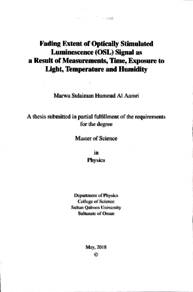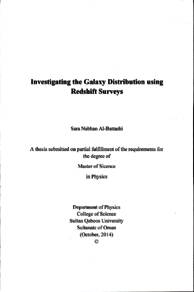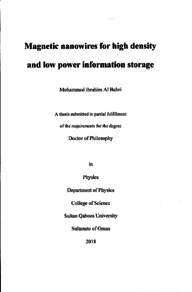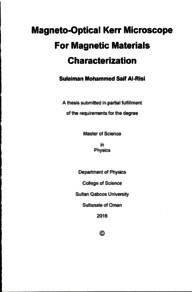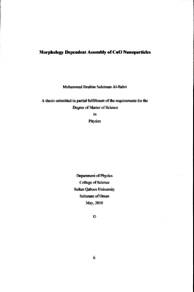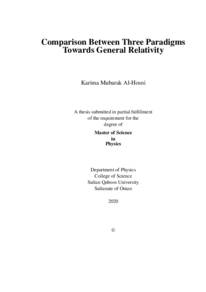Document
Structural and magnetic properties of Mn Implanted 6H-SIC.
Publisher
Sultan Qaboos University
Gregorian
2013
Language
English
Subject
English abstract
-Type 6H-SIC(0001) substrates were implanted with three fluencies of Mn 5x10" (Mn content: 0.7%). 1x10 (22 %), and 5x10 cm (7%) with implantation energy of 80 keV and substrate temperature of 365°C to promote re-crystallization. The samples were characterized using Rutherford Backscattering and Channeling Spectroscopy (RBS/C), High Resolution X-Ray Diffraction technique (HRXRD, micro Raman Spectroscopy (RS) and Superconducting Quantum Interference Device (SQUID) techniques. The aim was twofold: (1) first to investigate implantation-induced defects upon dose and amorphization threshold; in second to study any correlation between disorder-composition and magnetic properties, RBS/C spectra were fitted using McChasy code, and the corresponding results show that 41% of Mn occupy substitutional sites for the lowest dose , 63% for intermediate Mn content, whereas an almost amorphization occurred for the highest dose. The train deduced from HRXRD measurements increases with increasing fluence from 2% for 5x10 to 4% for 1x10" reaching a value of 5% for 5x10" Mn/cm . The hysteresis loops of the all samples have typical ferromagnetic shapes. The maximum magnetic moments were obtained for the fluence of Ix10' Mn/cm at which the ratio of Mn at substitutional site was maximum. The Mn depth profiles deduced from RBS reflect the same implanted zone (the same end of range) with a Gaussian shape centered at around 50 nm, while the maximum accumulated damage parameter 1 that varies from O for perfect crystal tol for amorphous phase, shifts from 50 nm for 0.7% to 80 nm for 7% Mn concentration. To have a clear picture about the correlation between structural and magnetic properties, we investigated the structural and magnetic properties of Mn-doped 6H-SiC using ab initio calculations Various configurations of Mn sites and vacancy types have been considered. The calculations showed that a substitutional Mn atom at either Si or sites possesses a magnetic moment. The Mn atom at Si site possesses larger magnetic moment than Mnatom at C site, which explains the magnetic behavior of the lowest and intermediate fluencies. A model is introduced to explain the dependence of the magnetic structure on site occupation. The magnetic properties of ferromagnetically (FM) and antiferromagnetically (AFM) coupled pair of Mn atoms with and without neighboring vacancies have also been explored. Our calculations show that antiferromantically coupled pair of Mn atoms at Si sites with neighboring C vacancy is magnetically more stable. The calculation also showed that the interstitial sites with neithbors are more favorable than those with Si and the magnetic moment for Men at interstitial sites is less compared to that a substitutional sites. This explains the dece of the m i c moment with increasing concentration of interstitial defects. For the highest fluence, the decrease of the magnetic moment is attributed to a large fraction of M o ms interstitial sites together with the occurrence of the AFM coupling between Mnalinterstitial sites and substitutional sites. The effects of relaxations in atomic positions were also studied. Post implantation thermal treatments were done in order to study the effect of temperature on the structural and magnetic properties of the implanted samples The results showed a very limited recovery for annealed samples at 800 °C while almost all defects have been removed after annealing at 1100 °C as confirmed from RBS measurements. The SQUID measurements of the annealed samples showed that the magnetization values were reduced strongly. The magnetization maintains its fluence dependence as before annealing and the intermediate fluence still exhibits the highest magnetization compared with the other two fluences. The reduction in magnetization on the annealed sample after 1100 °C and 1600 C was attributed to the annealing of vacancies neighboring Mn at substitutional sites and the increases of interatomic distances between the Mn atoms.
Member of
Resource URL
Category
Theses and Dissertations


